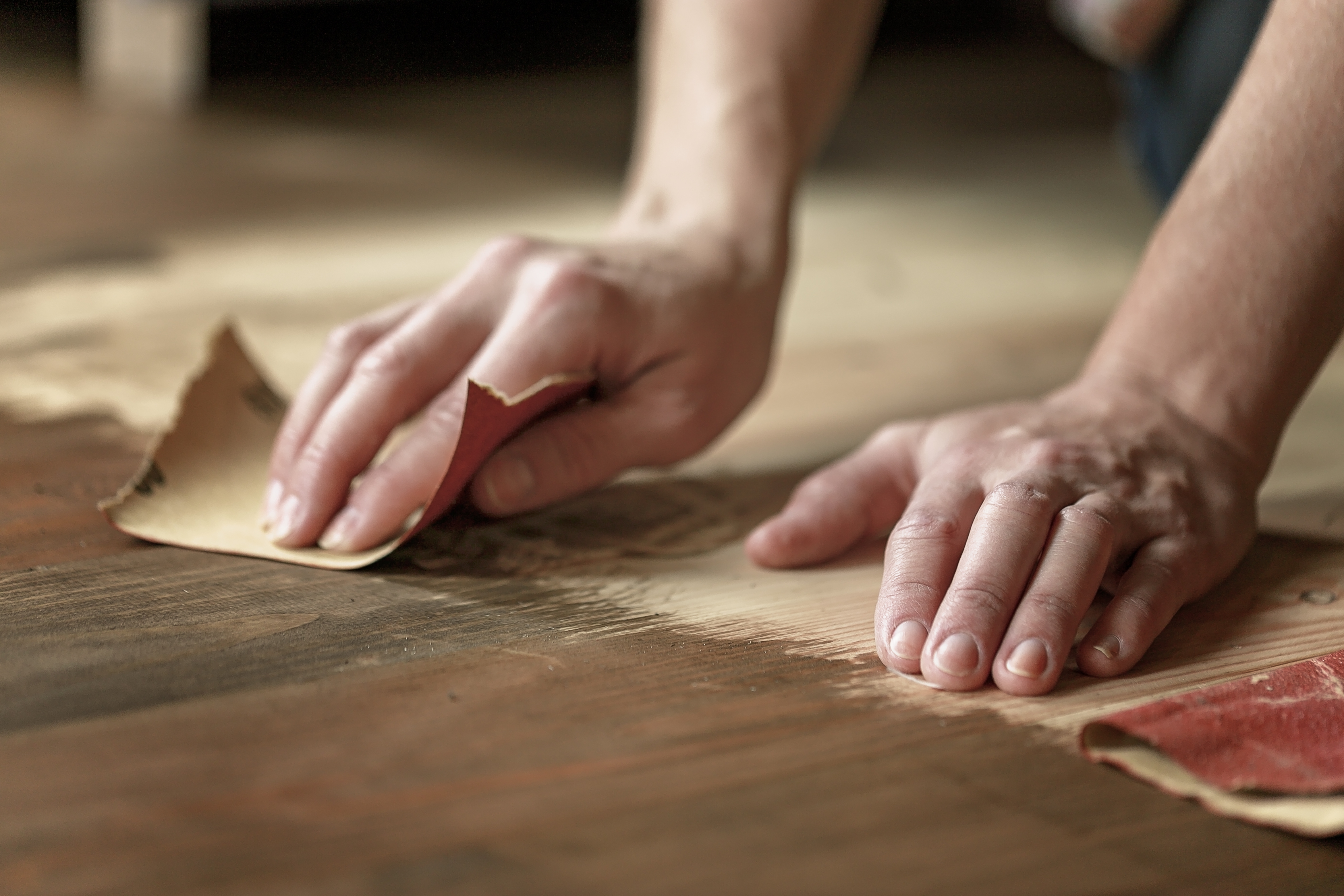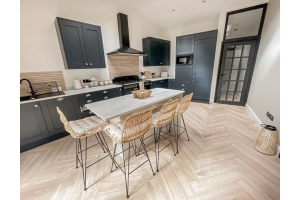
Cost is always a central consideration when it comes to flooring, which is why engineered hardwood planks can be a popular alternative to the installation of solid wood. Even engineered hardwood flooring can become worn and damaged over time, though. Having invested in that type of flooring in the first place, or having inherited it in a space that you love, it is important to understand the options available to you in terms of repair instead of replacement.
What is engineered hardwood flooring?
Engineered hardwood flooring differs from solid wood flooring because it is constructed in layers. While solid wood flooring is cut directly from trees, turned into single-piece floor boards, and then chemically treated, engineered hardwood glues together multiple thin slices of wood to create floor boards that are generally longer than the average solid wood plank. This makes installation easier, as well as making the planks themselves more robust.
In terms of quality, engineered hardwood flooring provides a level of flexibility in installation that is not possible with solid wood. The layered structure creates strength and enhanced stability, which means that the boards do not change with normal levels of temperature, moisture and humidity. While solid wood flooring requires space beneath it to allow for expansion and contraction of boards, engineered hard wood flooring can be laid onto concrete, or other type of base.
The structure and design of engineered hardwood flooring makes it a useful and cost-effective compromise between laminate flooring and solid wood. Like laminate flooring products, engineered hardwood is manufactured with machined layers – in this case, compressed wood. A top layer is then added, providing the appearance of solid wood. In addition to the flexibility this delivers in terms of installation, the construction of engineered hardwood flooring means a range of pre-treatments can be applied to the boards, which would not be suitable for use with solid wood. This has a significant impact on methods of refinishing.
Refinishing engineered hardwood flooring
While engineered hardwood flooring is a highly cost-effective alternative to solid wood, its layered structure means that great care must be taken when maintaining, repairing and refinishing the boards. Solid wood can withstand a notable amount of sanding, but engineered hardwood boards have a relatively thin top layer. This means that, while it is possible to refinish this type of floor, the process needs to be completed in a very specific way, using five main steps.
1. Preparation
Before any work is undertaken, it is important to prepare the floor first. This means removing furnishings and rugs from the area to be refinished, while also removing any skirting boards or beading. Doing so ensures that the refinishing can reach right to the edge of the engineered hardwood floor.
2. Sanding
When it comes to the sanding stage, it is important to keep in mind the fragility of the uppermost layer of the engineered hardwood boards. This is the layer that gives the appearance of solid wood, so it is essential that it is not over-sanded. The ideal tool for this type of job is a hand-held orbital sander using an oblong-shaped sanding pad with 60 grit sandpaper. With only the lightest of pressure, begin sanding in a corner and move the sander gently along the floorboards, making gradual but steady progression through the space. It is likely that certain parts of the floorboards will need to be sanded several times over during this process but, as long as the sander is not pushed into the wood too hard, the result should be an even, though dulled finish.
3. Cleaning
Once the sanding is complete, there will be a large accumulation of dust and grit across the entire area. This needs to be fully removed before progressing to the next stage, and vacuuming is the most effective way to lift the bulk of the debris. Having vacuumed the sanded floor thoroughly, any remaining dust can be removed with a damp cloth or mop. The floor must then be allowed to dry completely before moving onto the sealing stage.
4. Sealing
The purpose of refinishing an engineered hardwood floor is to enhance its appearance, and this always centres on the natural beauty, colour and grain of the boards. This should be the main consideration when selecting products with which to seal the wood. Sanding the boards will have removed the outmost layer and, therefore, the original seal. When applying a new seal, it can be highly effective to first apply wood stain. This helps to highlight the organic patterns and tones of the flooring, and should be applied with a brush - moving from the wall end, along with the grain. Once the whole area is covered, it will need 24 hours to fully dry.
5. Finishing
Once the wood stain is completely dry, it is advisable to apply a floor gloss product. Not only does this further accentuate the naturally occurring colours and grain patterns in the wood, but it also helps to make the engineered hardwood flooring more robust and hardwearing. It also helps to provide additional protections against moisture and humidity. The floor gloss product should be applied in the same way as the wood stain – beginning at a wall and moving along the grain. Once the area is covered, it should be left for 24 hours to fully dry. Then, sand the whole floor again, very lightly, using 220 grit sandpaper. The gentle sanding should be only as much as is necessary to reduce the shine. The debris should be vacuumed and cleaned once again, and the whole process repeated until three coats of gloss have been applied and allowed to dry completely.
Using this refinishing process on engineered hardwood flooring is a cost-effective way to restore and revitalise this robust and flexible product. With a careful approach, it is possible to extend the life of engineered hardwood flooring by a considerable margin – saving money on new flooring and maximizing the aesthetic potential of this popular alternative to solid wood. To find out more, contact Flooring Superstore today on 03308 084 523.












